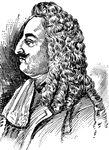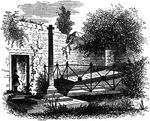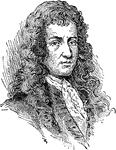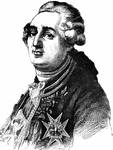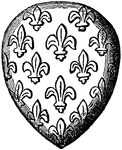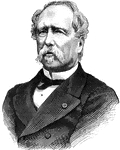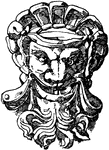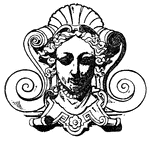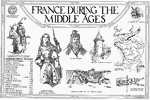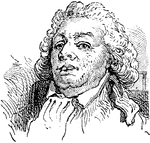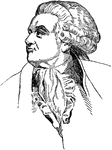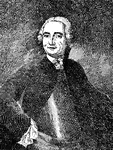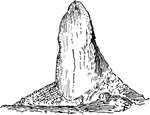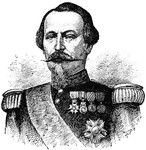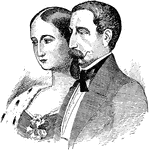
Colonne Juillet
"The Bastille, after its capture in 1789, was leveled to the ground, and its stones were used to build…
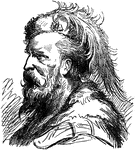
La Salle
La Salle, a famous French adventurer who navigated the Mississippi down to the Gulf of Mexico.
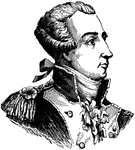
Marquis de Lafayette
The Marquis de Lafayette, a French citizen who fought on the side of the Americans during the American…
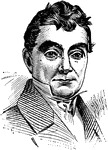
Marquis of Lafayette
A French military officer who served as a general in the American Revolutionary War, as well as the…

Le Puy Cathedral
The Le Puy Cathedral (Cathédrale Notre-Dame du Puy) facade or west front. It is a Roman Catholic cathedral…
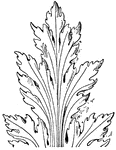
French Leaf Renaissance
The French Renaissance Leaf design tend to look more formal. This design was found in a church in Epernay…
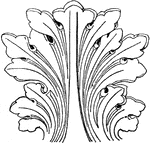
Romanesque Leaf
This Romanesque leaf design was found in a monastery in St. Trophimus (Southern France).

Cross of the Legion of Honor
"Instituted by Napoleon in 1802; given to both soldiers and civilians for distinguished services to…

Cross of the Legion of Honor
The Cross of the Legion of Honor is a decoration composed of a star of five double rays, with a wreath…

Statue of Liberty
"'Liberty Enlightening the World,' a gift from the French Republic to the Greatest Republic. Height…

Statue of Liberty
"The great Bartholdi statue, 'Liberty Enlightening the World,' erected upon Bedloe's Island in New York…
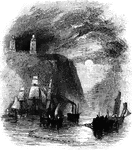
Light-Towers of the Heve
The romantisit, J. William Turner, was famous for his drawings of landscapes such as: lakes, castles,…
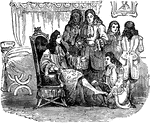
Louis XIV in his chambers
"The reign of Louis the Fourteenth has been termed the Augustan age of France. This monarch had none…

Medal of Louis XIV
"Commemorates the revocation of the Edict of Nantes. The obverse bears a representation of 'Louis the…

The Louvre and the Tuileries
"The palace of the Louvre was begun by Francis I in the sixteenth century and continued by his successors,…

Bird's Eye View of the Louvre
An illustration of the Louvre Museum in Paris, France from a bird's-eye view. The Louvre is one of the…
!["The change from the pure to the later Renaissance, which was formerly seen only in individual instances, has now received a certain extension. This is mainly owing to the key-note struck in the New Louvre [shown here], begun by Visconti, but finished by another architect. Although it is true that the new building conforms in general to the architecture of the Old Louvre, yet still an increase rather than a decrease is to be perceived in the effort for picturesque effect, in the licence of the Roccoco style, and in an unstructural treatment of the individual forms and ornamental parts."](https://etc.usf.edu/clipart/73800/73804/73804_louvre_corne_mth.gif)
Corner Pavilion of the New Louvre
"The change from the pure to the later Renaissance, which was formerly seen only in individual instances,…
![The Musée du Louvre or officially the Grand Louvre — in English, the Louvre Museum or Great Louvre, or simply the Louvre — is the national museum of France, the most visited museum in the world, and a historic monument. It is a central landmark of Paris, located on the Right Bank of the Seine in the 1st arrondissement (neighborhood). Nearly 35,000 objects from the 6th century BC to the 19th century are exhibited over an area of 60,600 square meters (652,300 square feet).The Louvre was built by "three prominent architects, [one of which was] Pierre Lescot (1510-1578), who desiged the celebrated Western Façade of the Louvre [shown here]."](https://etc.usf.edu/clipart/73700/73722/73722_louvre_facad_mth.gif)
Inner Façade of the Louvre
The Musée du Louvre or officially the Grand Louvre — in English, the Louvre Museum or Great Louvre,…
![The Musée du Louvre or officially the Grand Louvre — in English, the Louvre Museum or Great Louvre, or simply the Louvre — is the national museum of France, the most visited museum in the world, and a historic monument. It is a central landmark of Paris, located on the Right Bank of the Seine in the 1st arrondissement (neighborhood). Nearly 35,000 objects from the 6th century BC to the 19th century are exhibited over an area of 60,600 square meters (652,300 square feet).The Louvre was built by "three prominent architects, [one of which was] Pierre Lescot (1510-1578), who desiged the celebrated Western Façade of the Louvre [shown here]."](https://etc.usf.edu/clipart/73700/73723/73723_louvre_facad_mth.gif)
Inner Façade of the Louvre
The Musée du Louvre or officially the Grand Louvre — in English, the Louvre Museum or Great Louvre,…
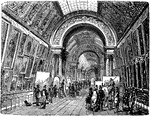
Gallery in the Louvre
An illustration of one of the galleries in the Louvre in Paris, France. The Louvre is one of the world's…
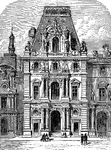
The Richelieu Pavilion of the Louvre
The Richelieu Pavilion (a pavilion located on the inside "court") of the Louvre Palace. The Richelieu…
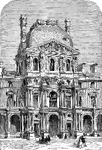
Turgot Pavilion of the New Louvre
Located in the New Louvre, the name given to the wings and pavilions extending from the main body. The…

The Lion of Lucerne
"It represents a dying lion, which, pierced by a lance, still guards with its paw the Bourbon lilies.…

Luxembourg Palace
An illustration of Luxembourg Palace which is located in Paris, France. The Luxembourg Palace houses…

La Madeleine
"Begun by Napoleon in 1806; not completed until 1842. The emperor planned it as a 'of fame' to commemorate…
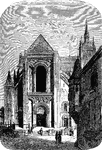
Cathedral of Mans
The Cathedral of Mans is a Roman Catholic Cathedral located in Le Mans, France. The Cathedral was built…
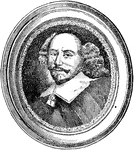
Cardinal Mazarin
A French-Italian cardinal who served as chief minister of France from 1642 until his death in 1661.
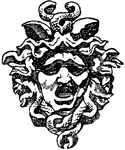
Tympanum Medusa Head
The Tympanum Medusa Head is found in the arch of the entrance of the Royal Palace of Tuileries in Paris,…
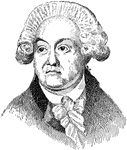
Mirabeau
A French revolutionary. He favored a constitutional monarchy built on the model of Great Britain.

Mont Blanc
The Mont Blanc (French for white mountain) or Monte Bianco (Italian 'White Mountain'), also known as…
Mont Dore, France
Section of the massif of Mont Dore, France, showing the succession of eruptions and the outline of the…
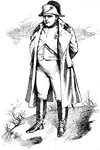
Napoleon
An illustration of Napoleon; Napoleon Bonaparte, later known as Emperor Napoleon I, was a military and…

Sarcophagus of Napoleon Bonaparte
An illustration of the sarcophagus of Napoleon Bonaparte located in the Church of the Hotel des Invalides.
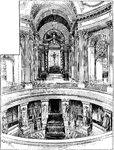
Tomb of Napoleon Bonaparte
An illustration of the tomb of the sarcophagus of Napoleon Bonaparte located in the Church of the Hotel…

Napoleon III and Otto von Bismarck
Napoleon III and Otto von Bismarck during the Franco-Prussian War. Louis Napoleon as the friend of Death.

